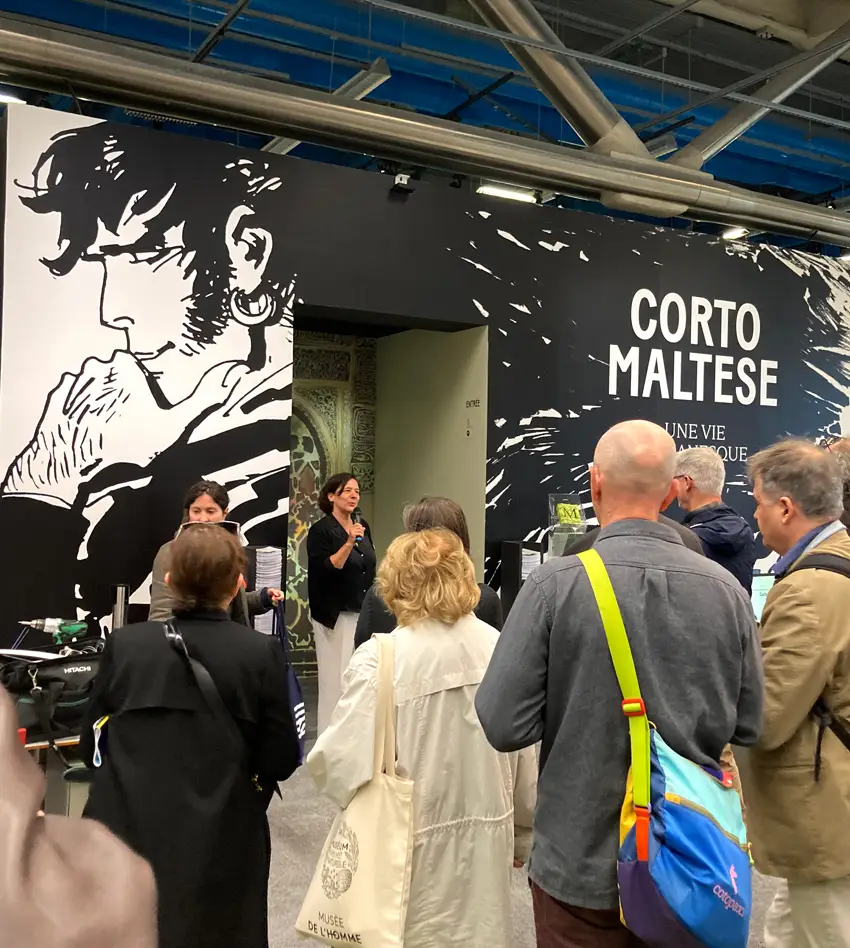Towards a New History of Bande Dessinée
Seven years ago at the Paris Book Fair, comic book aficionados Benoît Peeters and Pascal Ory made a bold claim. They argued that comics and graphic novels deserved recognition in the annals of aesthetics. Now, Paris’ Pompidou Centre has taken up this mission. Welcome to Comics on Every Floor, a sprawling showcase spread over five museum levels, displaying 800 pieces within its 80,000-square-foot premise.
Museums and Bande Dessinées
French museums have exhibited comic art for decades. Often, these exhibits sparked conversations around identity and history. Individual artist-centric exhibitions explored their unique styles and inspirations. Grand showcases featured legends like Hergé, celebrating France’s love affair with the medium.
The Pompidou show, however, follows a different script. It aligns with Ory and Peeters’ vision of comics as fine art. Creations from legends like Winsor McCay, George McManus, Edmond-François Calvo, Will Eisner, George Herriman, and Hergé now grace the space at “Beaubourg,” as Parisians fondly call it. La bande dessinée au musée (“Comics in the Museum”) also features newer works, creating an engaging dialogue with the classics.
Bande Dessinée 1964-2024: A Journey Through Comic Book Evolution
Upstairs lies another marvel, Bande Dessinée 1964-2024. This tour through five decades of BD evolution highlights Asian manga, European BD, and American comics. From Barbarella’s erotic sci-fi to Hara-Kiri’s satire and the punk-predicting Bazooka collective, it’s an art history class in itself. The exhibit features Japanese avant-garde monthly Garo and game-changing American movements like Kurtzman’s Mad. Originals, paste-ups, covers, and supersized blow-ups make the journey a fascinating whirlwind.
An Artistic Oasis
The exhibit doesn’t follow a strict chronology. Instead, it uses a theme-based structure. Visitors meander through art-filled sanctuaries dedicated to counter-culture, fear, dreams, laughter, history, memory, autobiography, everyday life, literature, futurism, cities, and geometry. Artists from Neal Adams to Zep gaze at you from the walls, each space vibrant with thoughtful lighting and wall colors.
Intriguing projections, groupings, and enlargements captivate visitors. Drawing duels between Franquin, Fournier, Brétecher, and Uderzo, or glimpses of Richard McGuire’s Here, provide visual treats. Massive frames featuring single works, like Killoffer’s Les cauchemar de l’amateur (“The amateur’s nightmare”) and Hideshi Hino’s La Filette de l’enfer (“Girl-child from Hell”), dominate walls, enriching the visual saga.
A Watershed Moment
Bande Dessinée 1964-2024, curated by Anne Lemonnier, Emmanuèle Payen, Lucas Hureau, and Thierry Groensteen, creates a paradigm shift in the museum’s positioning. Its intellectual brio is proudly Francophone. The expansive collection fortifies the belief that these works measure up to traditional art forms.
Bande Dessinée and the Fine Line of Aesthetic Respect
As BD art gains momentum, historian Pascal Ory warns against over-commercializing or ‘fetishizing’ the art form. He highlights the risk of distorting BD’s rich history. However, the landscape has shifted significantly since 2017.
Today, BD art enjoys an elevated status. Institutions like the Académie Française and Académie des Beaux-Arts recognize and induct figures associated with BDs. Yet, the potential of over-glorifying the visual aspect and transitioning it to a more décor objective remains a point of debate.
A Nod to the Past, a Leap Towards the Future
Read this article and more at August Tales Comics. Your go-to site for trade paperback exchanges and comic book news! Sign up for a free membership now and start trading!
#comics #comicbooks #graphicnovel #graphicnovels #augusttales
Image credit: www.tcj.com







